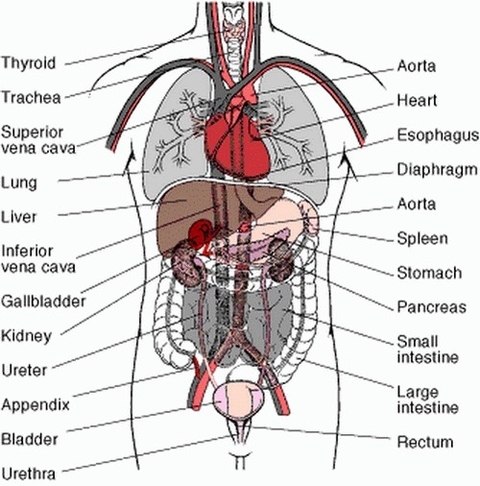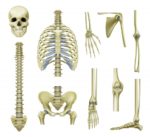The human body is a complex system of interconnected organs, each with a specific structure and function. Here are some of the major organs:
1. Brain: The brain is the body’s control center, forming the core of the central nervous system. It creates, sends, and processes nerve impulses, thoughts, emotions, physical sensations, and more.
2. Heart: The heart is the most important organ of the circulatory system, which helps deliver blood to the body. It has four chambers: two upper chambers called atria and two lower chambers called ventricles.
3. Lungs: The lungs are vital for respiration. They oxygenate the blood, which is then circulated throughout the body.
4. Liver: The liver is a vital organ that performs many functions, including detoxification, protein synthesis, and the production of biochemicals necessary for digestion.
5. Kidneys: The kidneys are responsible for filtering waste products from the blood and excreting them in urine.
6. Gallbladder: The gallbladder stores bile, a substance produced by the liver to digest fats.
7. Pancreas: The pancreas produces enzymes that help in the digestion of food and also produces insulin, which regulates blood sugar levels.
8. Stomach: The stomach is a sac-like organ that plays a crucial role in digestion. It secretes gastric juice that breaks down food particles.
9. Intestines: The small and large intestines play a crucial role in digestion and absorption of nutrients.
10. Skin: The skin is the largest organ of the body. It serves as a protective barrier against environmental hazards and helps regulate body temperature.
These organs work together in organ systems to maintain the body’s overall health and functionality. For instance, the nervous system supports these organs by coordinating their activities. The endocrine system, consisting of glands like the pituitary, adrenal, thyroid, and pancreas, plays a crucial role in hormone production and regulation.
In summary, each organ in the human body has a specific role and function. They work together in harmony to ensure the body’s overall health and well-being. It’s important to note that this is a simplified overview, and the human body’s complexity extends far beyond this description..


